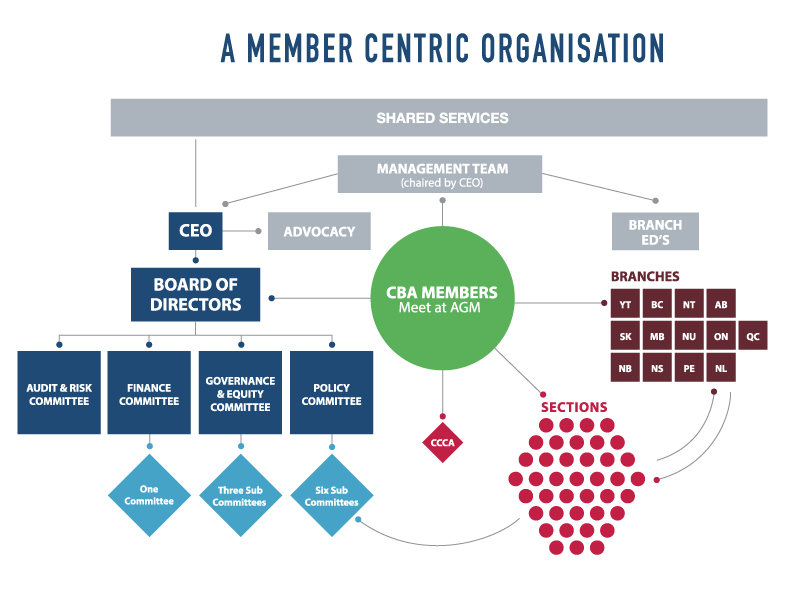Governance
The Canadian Bar Association (CBA) adopted a new governance model that came into effect on September 1, 2024. The model reflects our commitment to staying relevant to our members and the legal profession in Canada.
The CBA is governed by a President who chairs a 17-member Board of Directors. Our CEO also sits on the Board as a non-voting member. Our Board represents the diversity of Canada’s legal profession, including practice types, experience, skills, geography and more. All provinces and territories have a seat at the table.
Four Board Committees—Finance, Governance and Equity, Policy, and Audit & Risk—support decision-making, coordinate policy activities and engage CBA volunteers. Each reports to the Board of Directors, increasing accountability within the organization.
The Leadership Forum serves an important communication function—linking Board members, branch presidents and Sections. This forum of Bar leaders is convened at least once a year to ensure that the input and voice of all regions and sectors are heard—and reflected in the CBA’s strategic direction.
CBA Branches coordinate services for CBA members in their jurisdictions. They may determine their own governance structure, based on local needs and considerations.
There are 39 national CBA Sections, or specialty groups, that represent common interests or focus on substantive areas of the law and the legal profession. Each is administered by a CBA Section executive, which identifies and coordinates advocacy activities, professional development programs and subject matter experts to support each Section’s work. The Governance and Equity Committee oversees national Sections through the Sections Subcommittee.
The CBA's foundations and corporations operate through CBA bylaws. They offer tailored products and services to members at special rates.
Our Annual General Meeting is open to all CBA members.
A Member Centric Organization
